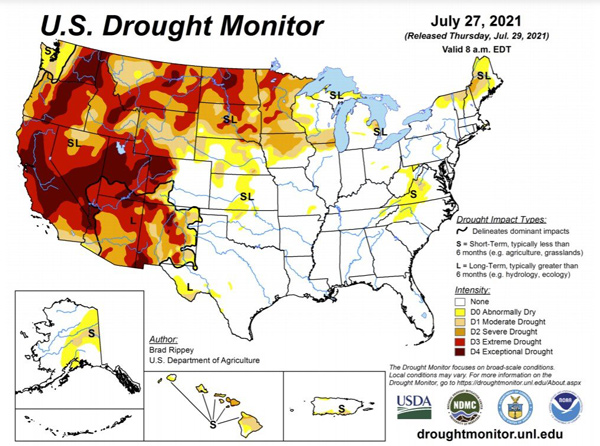California temporarily increases weight limit for trucks in bid to resolve port congestion crisis
11/22/2021 / By Arsenio Toledo

The California Department of Transportation (CalTrans) announced on Wednesday, November 17, that it will issue temporary permits that will allow trucks to carry heavier import loads.
The state government hopes this change can help resolve the state’s port congestion crisis. However, experts believe it is unlikely to produce the intended reductions in the huge cargo container backlogs at California’s ports.
According to CalTrans, truckers with temporary permits will be allowed to transport 88,000 pounds worth of import cargo – up from the original limit of 80,000 pounds. The temporary permits will apply until June 30, 2022.
“California’s ports are critical to our local, state and national economies and the state is taking action to support goods movement in the face of global disruptions,” said California Gov. Gavin Newsom in a statement Wednesday.
The governor added that while he does not expect the increase in weight limits to have an immediate effect, “it will have a substantial benefit on industrial and manufacturing cargo and containers that will make their way into the ports of Long Beach and L.A.”
Along with raising weight limits, Newsom also announced that the state will rely heavily on funding from the federal government.
The governor said he will direct state agencies to lobby the federal government for more funds from the infrastructure bill recently signed by President Joe Biden. The bill will distribute $17 billion for port infrastructure. Newsom claims that California should get a bigger share of the money since it is the most populous state in the country.
“We’re going to be bold, and we’re going to demand our fair share of investment,” said Newsom. “Look at how much money the Port of Savannah received over the course of the last few decades and how little money we received here in L.A. and Long Beach despite our dominance.” (Related: Georgia’s solution to port congestion? Move shipping containers inland.)
Weight limit increases will not resolve California’s port congestion
Experts have pointed out that increasing the weight limits for trucks will barely have any positive impact on California’s port congestion.
“It’s not going to have any impact on what’s happening right now. There is no mechanism that is going to assist this backlog relative to weight,” said Matt Schrap, CEO of the Harbor Trucking Association.
Schrap said the new rules do not provide a solution for how trucks will be able to carry extra-heavy loads without being provided special equipment that better distributes the weight on the road surface. He added that local jurisdictions also need to pass weight exemptions for truck drivers, otherwise truckers will not be able to take advantage of the permits.
“I’m glad that they’re trying creative solutions, but we need realistic approaches to clear this bottleneck,” said Schrap. “For us, at the end of the day, it’s not about having heavier containers. It’s about getting the empty containers out of here. That is the issue.”
“There are over 100,000 empty containers at the harbor. We need sweeper vessels, we need additional empty return depots so we can free up chassis to move the imports off dock,” he added.
Logistics experts have pointed out that California’s ports and other marine terminals are overloaded with empty cargo containers. Empty containers that remain in the terminal rest on chassis, reducing the availability of wheeled equipment that can pick up new imports.
This makes it difficult for cargo owners and their trucker employees and partners to return unloaded containers to their final destinations and keep the flow of goods.
Without the right interventions, such as by either finding a place to store empty cargo containers or finding more wheeled chassis to keep new cargo moving, California’s port congestion and the many problems that the state is dealing with because of it are likely to be resolved.
Read more articles about California’s attempts to reduce port congestion at CaliforniaCollapse.news.
Sources include:
Submit a correction >>
Tagged Under:
big government, Bubble, California, economic collapse, economy, Gavin Newsom, port congestion, ports, products, supply chain, supply chain crisis, truck drivers, trucks, weight limits
This article may contain statements that reflect the opinion of the author
RECENT NEWS & ARTICLES
COPYRIGHT © 2017 BIG GOVERNMENT NEWS





















